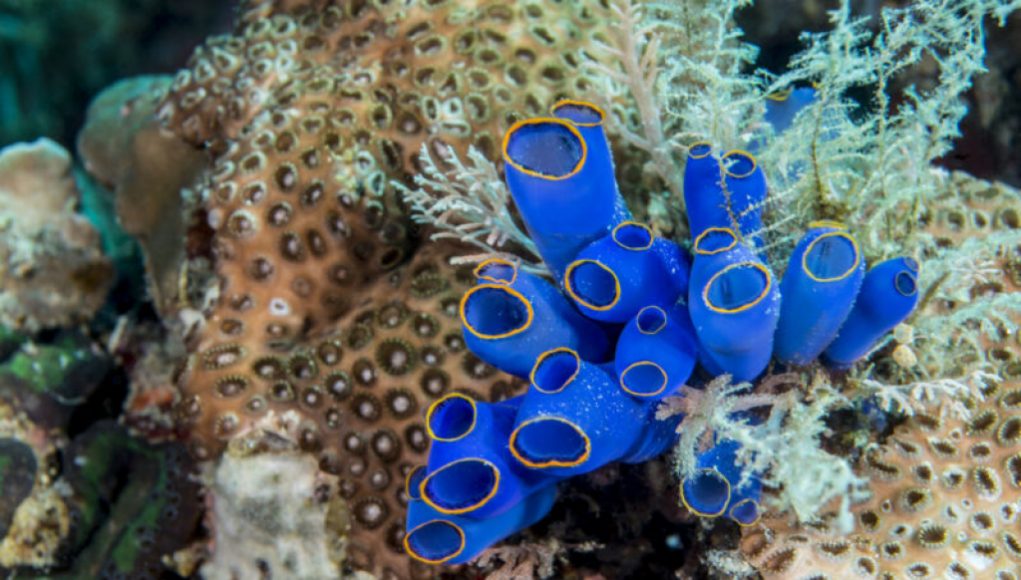Beneath the waves, there is a hidden world of strange and almost alien creatures that challenge our understanding of life on Earth and our own origins. Among these enigmatic beings are tunicates.
Tunicates, which include sea squirts and salps, are filter-feeding invertebrates. Some species are sessile, attaching themselves to rocks or the seafloor, while others swim freely. But what makes them truly fascinating is their life cycle. They start as larvae resembling tadpoles, and while the motile tunicates grow into larger versions of their larval form, the sessile ones transform into tubelike creatures with two siphons.
Despite their peculiarities, tunicates are believed to be the closest relatives to vertebrates. However, their evolution remains a mystery. Fortunately, a 500 million-year-old fossil called Megasiphon thylakos is shedding light on the evolution of these intriguing organisms.
An evolutionary enigma
Discovered by evolutionary biologist Karma Nanglu of Harvard University, Megasiphon thylakos is providing valuable insights into tunicate evolution. While tunicates have been around since the Early Cambrian, they have been largely absent from the fossil record. The remarkably preserved M. thylakos specimen is now revealing more about their evolution and their relationship to vertebrates like humans.
“[The fossil] indicates that the divergence between appendicularians and other tunicates occurred 50 million years earlier than previously estimated,” explained Nanglu and his research team in a study published in Nature. “Ultimately, M. thylakos demonstrates that fundamental components of the modern tunicate body plan were already established shortly after the Cambrian Explosion.”
Due to the scarcity of tunicate fossils, it was unclear whether they originated as sessile organisms like ascidiaceans or as motile organisms like appendicularians. Another existing tunicate fossil, Shankouclava anningense, is inconclusive. It exhibits some ascidiacean features but lacks others, such as feeding siphons.
Advertisement
Two hypotheses exist regarding the evolution of tunicates. The first suggests that their ancestral form was motile, and the sessile species evolved from these motile ancestors. The second hypothesis argues that the genetics of modern tunicates make it unclear whether their ancestral form was motile or sessile.
New evidence from old rocks
The M. thylakos fossil, with its tube structure and siphons resembling modern ascidiaceans, indicates that ancient tunicates may have started as sessile creatures.
Another intriguing feature of the fossil is the presence of dark bands similar to the muscles used by the extant tunicate Ciona intestinalis to open and close its siphons during feeding. This suggests that the body plan of M. thylakos, which emerged after the Cambrian Explosion, was already well-established.
Although the attachment point of M. thylakos to a rock or the seafloor is not visible due to deterioration, its striking resemblance to extant ascidiacean tunicates like C. intestinalis has led Nanglu to believe that early tunicates were most likely sessile, just like their descendants.
Unexpected relatives
But how can tunicates be related to us? Both humans and tunicates belong to the phylum Chordata. Chordates share common features, with the most notable being a flexible, supportive rod structure called a notochord. Tunicates and cephalochordates are the only two chordate groups that are not vertebrates. Previously, cephalochordates were considered the closest living relatives to vertebrates, but a 2006 study revealed that tunicates are genetically closer.
“Tunicates are an evolutionarily significant subphylum of marine chordates, with their phylogenetic position as the sister-group to Vertebrata, making them key to unraveling our own deep time origin,” added Nanglu in the study.
Although tunicates still hold many secrets, there may be more fossils waiting to be discovered, offering further insights into their origins and ours.
Nature, 2023. DOI: 10.1038/s41467-023-39012-4 (About DOIs).
Elizabeth Rayne is a creature who writes. Her work has appeared on SYFY WIRE, Space.com, Live Science, Grunge, Den of Geek, and Forbidden Futures. When not writing, she is either shapeshifting, drawing, or cosplaying as a character nobody has ever heard of. Follow her on Twitter @quothravenrayne.
Noted evolution experts have been left astonished after a mysterious creature, thought to have been extinct, resurfaced in a fishing trawl off the east coast of North America last week.
The creature, named Beulah gazlemoty, is believed to be a type of sea critter that has existed for millions of years, but had never before been encountered alive in recent times.
Researchers believe that the Beulah gazlemoty is a distant relative of an extinct species which lived in the ocean during the Cambrian period of the Paleozoic era, approximately 542 to 251 million years ago.
The creature’s appearance has surprised many experts, due to its hard shell, thought to provide protection from predators, as its form is oddly stick-like in comparison to other crustaceans. Researchers believe that this ergonomic form, as well as its ability to take oxygen from surrounding water, has allowed it to survive millions of years in its underground habitat almost undetected.
The Beulah gazlemoty has now become the focus of extensive research, in order to discover its ecological history and adaptations overtime. So far, researchers have successfully bred the creature in a laboratory environment, as well as studied its behaviour in the wild.
With the discovery of the Beulah gazlemoty, researchers feel optimistic about future find and better understanding of the animal kingdom and its adaptations over time.
Though its extraordinary nature has captivated scientists, many are intrigued to know how the Beulah gazlemoty, an ancient sea creature, managed to survive in the depths of the ocean for millions of years virtually undetected.




















